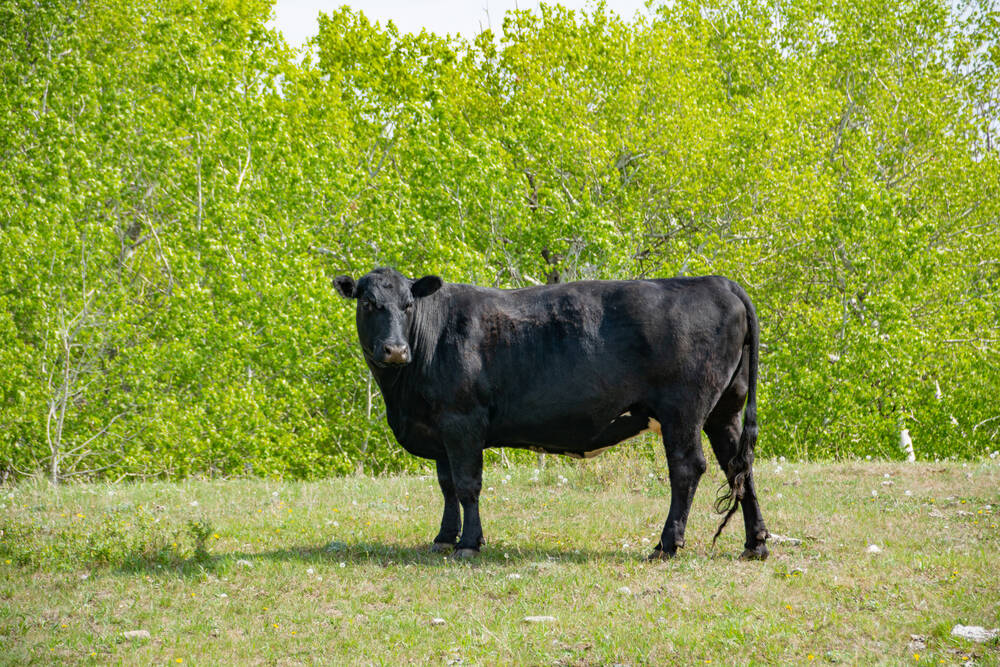Originally published on June 20, 2024 on Manitoba Co-operator
By Roy Lewis
We hear a lot about preparation for calving season, but just as much time and energy should go into preparation for breeding season.
It’s a crucial time for your herd, and success hinges on preparation to avoid reproductive loss.
Planning ahead to meet the nutrition needs of the herd is important. Consult your nutritionist about specific recommendations regarding mineral supplements. It can be difficult for producers to meet peak nutritional needs, as mixed rations give way to turn out on grass, so it’s a little harder to know exactly what the cattle are getting.
The bottom line is that cows shouldn’t be losing weight in breeding season, and that can easily happen if they’re also raising a big calf. First-calvers sometimes need to be supplemented so they don’t get too run down and lose body condition.
Before the breeding season, think about reproductive diseases and which ones are needed in the vaccine program. IBR and BVD must be covered off for sure, as the two most important reproductive diseases in beef cattle. Most people give vaccines containing these two antigens before breeding. Some give killed vaccines and others may give live vaccine in late pregnancy to cows that had previous vaccines.
Your veterinarian will often recommend clostridial vaccination. For cows that were sick or injured, with retained placentas or hard calvings, it may be worth it to have them checked and palpated, with appropriate treatment if necessary.
If cows have low grade uterine infections, are sick and losing weight or severely lame, it is not uncommon to see them come open in the fall. Any major problem like retained placenta, lameness, excessive weight loss or poor milking must be explored to see if prevention is possible for the rest of the herd.
Generally, lice or internal worms will not be a problem in spring if herd treatment was given in the fall.
Bull reproduction is critical. Overall health, foot health, body condition and semen evaluations are necessary to ensure a fertile active bull is with the cows. For newly acquired bulls, how did they test and how have they been since delivery?
I wish I had more tips to prevent bulls from fighting but give them lots of room and places to hide if necessary. Oilers, bushes, rocks and pigs (large balls) can be placed in bull pens to give them something to do. I believe we need to learn more about enrichment to keep bulls occupied.
These days, there is more use of shared bulls between two producers. As long as health status is the same for both farms, so there’s no risk of venereal transmission, the bulls stay in better shape and fertility is maintained.
Most larger farms test every bull every year to make sure they are not using a bull of low or no fertility. Murphy’s Law means the most dominant breeding bull will be the one whose fertility is compromised. If using bulls just for clean up purposes, fertility is still critical.
If the major part of the breeding program is artificial insemination, read on. If you haven’t used AI before, take a course or have an experienced inseminator start you off. There are lots of details to get ready, from supplies for insemination (sleeves, pipettes, lube), hormonal shots and intravaginal devices such as CIDRs or Prids.
A whole article can be devoted to synchronization programs but use one your veterinarian or A.I technician recommends. That way they can better guide you. Don’t synchronize more cows than you or your team can comfortably AI in a couple hours.
Care in storing, handling, thawing the semen and maintaining a clean process will yield good results in AI. Track your conception rate and try to improve the technique. In my opinion dairy cattle are much harder to AI, so anyone who breeds in a dairy should have little problem with beef cows.
Always keep a close eye on breeding bulls for cut or broken penises during the breeding season. Treat sick ones and have lame ones examined as soon as you can. Bulls can make or break a breeding season, so if in doubt, get them checked or at least take photos or videos and get a second opinion.
Always expect the unexpected in the breeding season.
